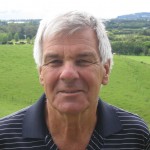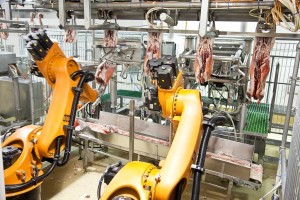 The Ministry for Primary Industries (MPI) has set itself an ambitious strategy to 2030 with the subtitle ‘Growing and protecting New Zealand,’ writes Allan Barber.
The Ministry for Primary Industries (MPI) has set itself an ambitious strategy to 2030 with the subtitle ‘Growing and protecting New Zealand,’ writes Allan Barber.
In its introduction, the Ministry asks ‘Why this strategy?’ which it answers by saying a re-balancing of the economy towards more productive sources of growth is required and New Zealand must trade itself to greater growth and prosperity.
When one considers that 71 cents in every dollar of merchandise export earnings come from the primary sector, there are no prizes for guessing where most of this is expected to come from. The Government’s strategic growth agenda contains the goal of increasing the ratio of exports to GDP from 30 percent to 40 percent of GDP by 2025, so clearly agriculture will be expected to generate the majority of this increase.
MPI, which now incorporates the functions of MAF, as well as the Ministry of Fisheries and New Zealand Food Safety Authority, has a major role and responsibility for helping to achieve these goals. Having always believed that government agencies must provide the framework and environment within which business has to perform and achieve, it’s expecting too much of MPI and its strategy, if we believe that this will be easy.
Strategy 2030 contains two points of focus: first to ‘maximise export opportunities and improve sector productivity’ and second to ‘increase sustainable resource use, and protect from biological risk.’
Key strategies to achieve these are:
- Partnering with the primary sectors to identify and seize opportunities for improved productivity and market returns;
- Removing unnecessary barriers to trade and increasing our use of international standards to enhance value;
- Encouraging and co-investing in industry innovation and adoption;
- Identifying and managing risks to New Zealand’s natural resources;
- Partnering innovative approaches to environmental challenges; and
- Better understanding the challenges to sustainable use of New Zealand’s natural resources.
The Ministry’s approach will concentrate on enabling and partnering by cooperating, facilitating, providing information and tools, using a whole-of-government approach across the primary sector and connecting primary sectors with one another. A key aspect of this is to engage with Maori which MPI sees as a core obligation.
Before jumping to the conclusion that this obligation is yet another example of political correctness, which is tempting, one must realise that Maoridom has $10.6 billion invested in primary sector assets including 1.5 million hectares of land of which MPI says 80 percent is underutilised. This degree of underperformance certainly needs to be improved and will produce economic returns for both Maori and the country as a whole.
MPI’s structure to deliver its strategy consists of five branches across the whole operation: Policy, Standards, Verification and systems, Compliance and response, and Resource management and programmes. These five branches encapsulate the total range of activities which the Ministry undertakes. The ones with the highest profile are food safety, animal welfare and biosecurity, but these are just the tip of the iceberg.
MPI has responsibility for literally everything and everybody leaving and entering the country. It negotiates standards with the regulatory authorities of our trading partners; it establishes the systems and maintains surveillance to ensure compliance with these standards. It also develops and implements policies across the whole gamut of New Zealand’s agriculture, horticulture and aquaculture sectors.
It is staggering to reflect that in 1987 David Lange saw agriculture as a sunset industry with New Zealand’s future lying in becoming the Switzerland of the South Pacific.
Now more than ever, the primary sector is the engine of our economic growth. MPI’s core responsibilities of setting and applying systems and standards for food safety, animal welfare and biosecurity, while ensuring effective response to pest incursions and non-compliance, are absolutely fundamental to our future place in the world.
The Ministry has an enormous responsibility for ensuring the protection and security of our whole primary sector which is a critical part of our economic growth.
Provided it doesn’t lose its focus on the clearly defined essential outcomes listed in its strategy, this is how it will make its major contribution towards ensuring New Zealand’s future prosperity.
Allan is an agribusiness commentator with particular interest in the meat industry and has his own blog Barber’s Meaty Issues. This article also appears at interest.co.nz.
 “Next May is likely to be a particularly important time in the Trans-Pacific Partnership (TPP) negotiations,” said Stephen Jacobi, executive director of the NZUS Council.
“Next May is likely to be a particularly important time in the Trans-Pacific Partnership (TPP) negotiations,” said Stephen Jacobi, executive director of the NZUS Council.






